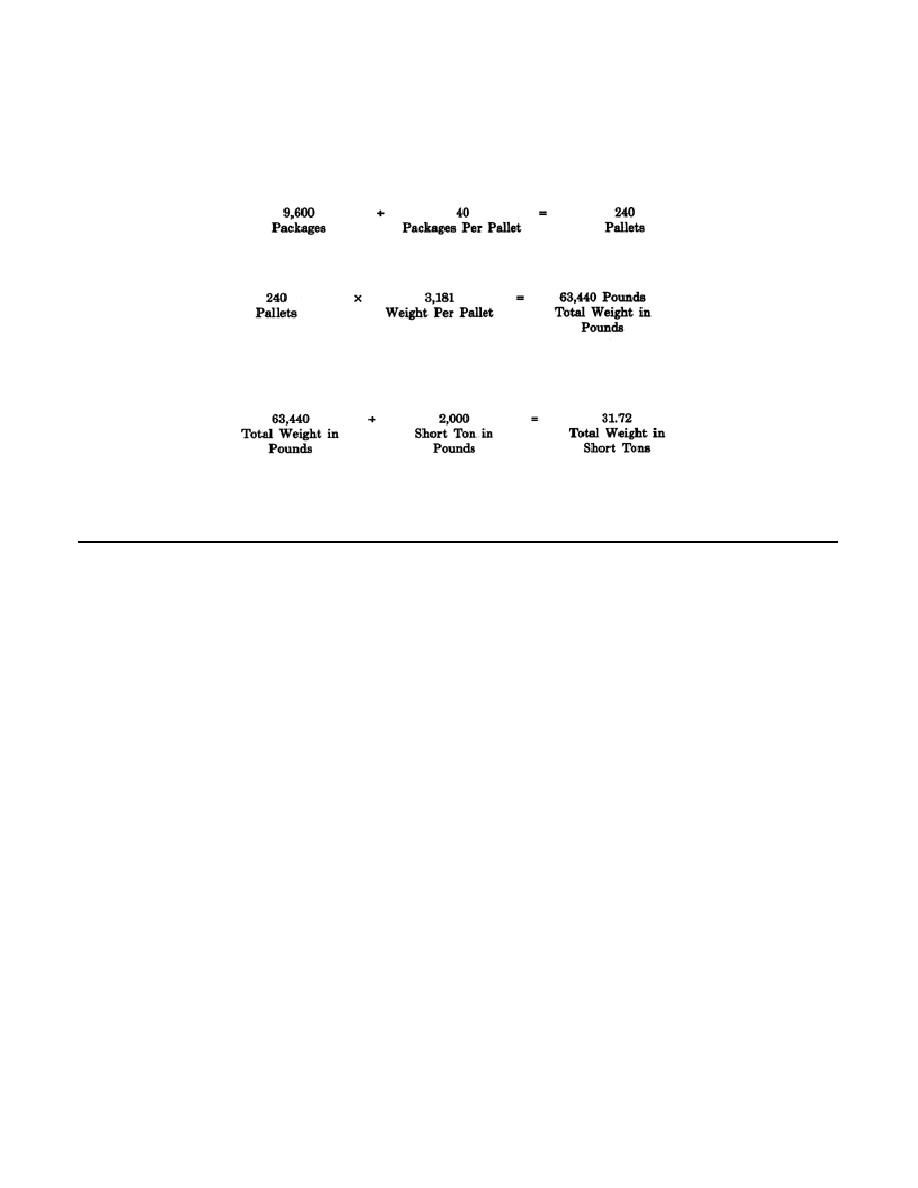
MM4619
Then, divide the total number of packages by the number of packages per pallet (SC/PT). This gives the number
of pallets.
Next, multiply the number of pallets by weight per pallet (PLT WT). This gives the total weight of all pallets.
Finally, divide the total weight of all pallets by 2,000 pounds. This gives the total gross tonnage for the first line
item of the stockage list in Figure 1.
The other line items of the stockage list are then computed the same way. All the weights added up are the
total of short tons of the items that the ASP will be required to store. This tonnage will be used with field storage
categories (discussed below) to compute QDs.
DETERMINING FIELD STORAGE CATEGORIES
Safe field storage becomes difficult because often the amount of land available is restricted or components of
complete rounds have to be stored in stacks adjacent to each other. Thus, field storage categories were
developed to make it easier to render speedy yet safe service to the units that the ASP will be supporting. By
segregating munitions by degrees of hazard, these categories minimize the risks of chain explosions,
fragmentation, spread of fire, and, when storing chemical munitions, contamination.
Field storage categories are based on the following safety factors:
Ammunition items having similar storage risks should be stored together in field storage units (FSUs).
The maximum quantity of ammunition that can be stored at one location should be based on gross weight,
including packaging.
Only one type of ammunition should be stored in one stack (part of an FSU).
Small arms ammunition, except bulk-packed incendiaries and tracers, may be stored with any category.
The Categories
Being in a field environment, conventional ammunition stored at an ASP is divided into field storage
categories (with the exception of small arms ammunition as noted above) (Figure 3). The list of categories and
more information on them can be found in TM 9-1300-206, Ammunition and Explosives Standards.
Using Categories
To determine the field storage category of an item, first look at the stockage list. For example, the first item
on the stockage list in Figure 1 is cartridge, 7.62mm ball (Department of Defense Identification Code [DODIC]
A131). Since this is small arms ammunition, it may be stored with any category. The second item is cartridge,
60mm HE, with fuzes, (DODIC B632). This is mortar ammunition, therefore Category C.
To determine the category of the rest of the items on the list, compare each item of ammunition to the
categories.
With all the information gathered so far, the QD can now be determined.
8


 Previous Page
Previous Page
